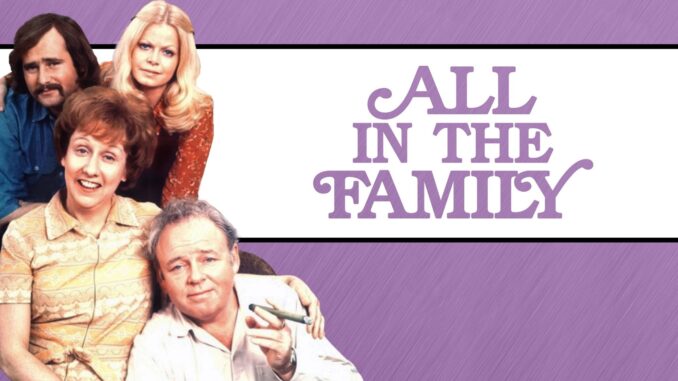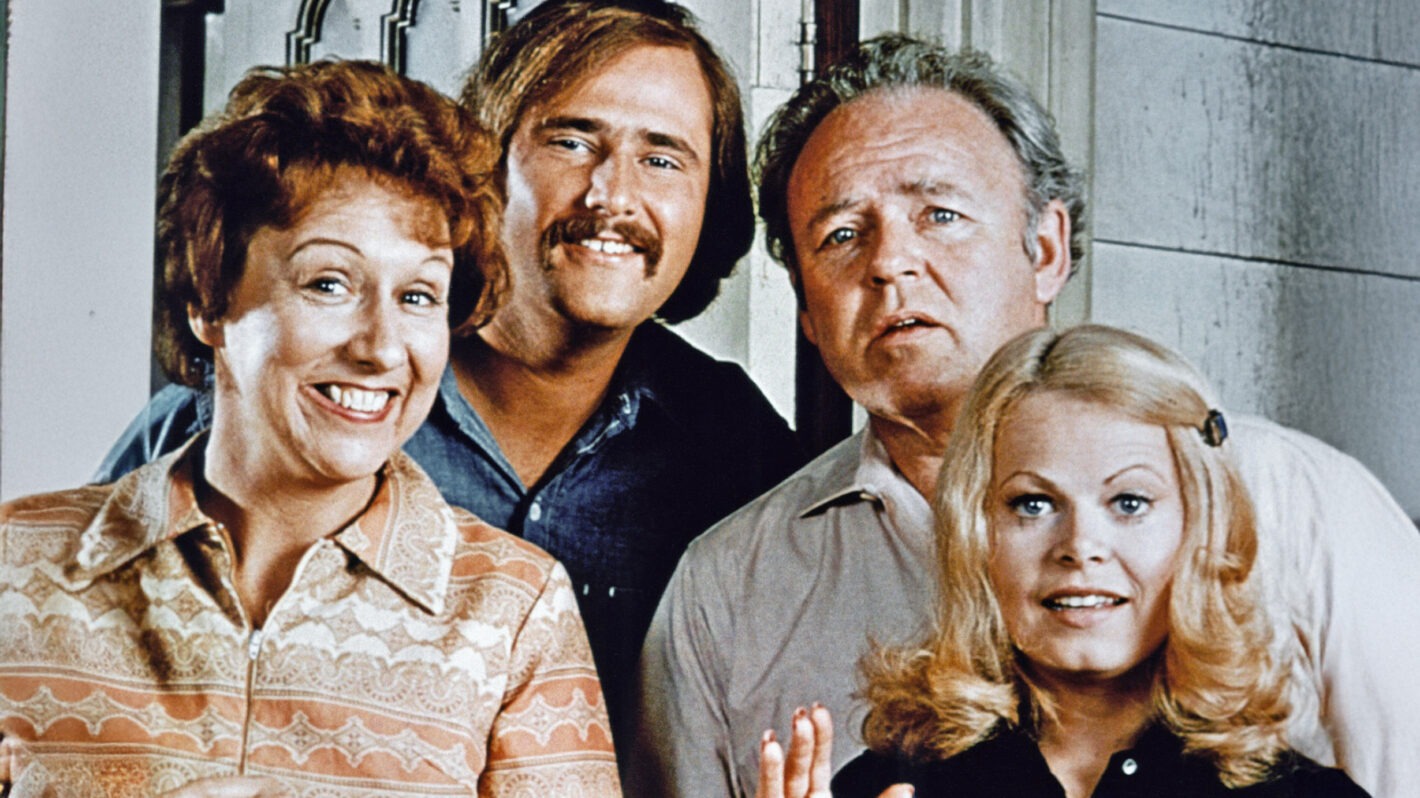
When All in the Family aired its final episode on April 8, 1979, fans braced themselves for an ending worthy of the landmark sitcom. Titled “Too Good Edith,” the farewell leaned into the emotional core of the show: the relationship between Archie and Edith Bunker. It wasn’t a grand spectacle, but it delivered powerful closure—and a moment that echoed far beyond its time. In this article, we’ll break down what happened, analyze its meaning, and explore why the ending still holds weight today.
Background — Why the Show Ended
Creative Choices & Actor Decisions
Norman Lear had always believed in ending shows on a high note. After nine seasons, he felt the time was right. Meanwhile, Jean Stapleton (who played Edith) expressed that she had done all she could with the role and was ready to move on.
Still, CBS wanted to keep the franchise going—thus the compromise: All in the Family would wrap up, but the world would continue via a spin-off (Archie Bunker’s Place).
Cast Departures & Reconfigurations
By the final season, Sally Struthers (Gloria) and Rob Reiner (Mike) had left the show as regulars. The focus naturally shifted back toward Archie and Edith.
Thus, the last episode had to center on what felt most essential—the emotional core between husband and wife.
The Plot Summary — “Too Good Edith”
The Setup — St. Patrick’s Day Feast
Archie plans a big St. Patrick’s Day celebration at “Archie’s Place,” the bar he owns. He asks Edith to cook a huge spread—corned beef, cabbage, the works. But Edith has phlebitis (a painful inflammation of the legs) and has been told by her doctor to stay off her feet.
Edith, not wanting to disappoint Archie, hides her illness and tries to carry on working in the kitchen.
The Illness Revealed
Eventually, Edith’s health worsens—her legs give out. She admits to Archie she can’t walk and coaxes him to call Dr. Sidney Shapiro
Dr. Shapiro initially chastises Archie, assuming he forced Edith to labor. But when he realizes Edith hidden the truth, he softens and asks Archie not to let it happen again.
The Emotional Climax
In a quiet, heart-rending moment, Archie climbs upstairs, sees Edith resting, and confronts his own feelings. He admits:
“I’ve been blowing my own horn for a lotta years … but lemme tell you somethin’. I ain’t nothing … without you.”
They kiss, they weep. Edith responds, through tears, “You know somethin’? You’re a pip. A real pip.”
The Final Shot — Iris Out
The series ends with a camera trick called the “iris out.” The frame closes from circular to black, evoking an old film technique, shrinking in on the couple’s emotional connection.
That visual sends a message: this is more than a sitcom’s end. It’s an homage, a farewell, a memory.
Deep Dive — Themes & Symbolism
Illness as Metaphor
Edith’s phlebitis is more than a medical issue—it symbolizes all the hidden burdens she’s carried for years. She’s bore Archie’s outbursts, masked her pains, carried the emotional labor. Her sudden collapse forces acknowledgment.
Archie’s Vulnerability
Archie, the blusterer, finally breaks. He confesses his dependence on Edith. That moment is stunningly human—it strips away the macho façade. Over nine seasons, Archie rarely showed softness. This moment refashions him.
Silence vs. Words
Throughout All in the Family, Archie often speaks before thinking. In contrast, here he chooses to be deliberate: “I ain’t nothing without you.” That line is deliberate, chosen, unguarded.
Nostalgia & Impermanence
The “iris out” camera effect is no accident—it recalls silent cinema and memory. The image recedes. We are left with an echo, a suggested past. The show’s closing technique signals: we’re closing the door, but the story lives in memory.
Differences Between the Final Show & the Spin-Off

Edith’s Fate Post-Finale
Interestingly, though Edith survives the All in the Family finale, her death occurs off-camera in the spin-off, Archie Bunker’s Place.
In Archie Alone (season 2 of the spin-off), Archie grapples with grief and denial when he discovers Edith died in her sleep.
Transitioning from Home to Bar
The shift from a family home to Archie’s bar setting subtly changes the show’s dynamics. The family bond, the living-room debates—they fade. Archie Bunker’s Place emphasizes Archie’s life post-Edith, frequently lonely and raw.
Why This Ending Works (and Why Some Viewers Were Unsettled)
Closure Without Closure
We don’t get perfect closure—there’s no farewell party, no montage, no clean ending. But we get what All in the Family always offered: confrontation with raw human emotion. The ambiguity feels real.
Centering the Marriage
Many sitcoms end with spectacle or reunion. This finale focuses on marriage—how two people, flawed and fallible, cling to each other. It honors Edith and Archie’s complicated bond.
A Farewell to the Past, not Denial of It
The camera iris, the slowed fade—all these remind us that time passes, moments recede. The show doesn’t deny its past glories; it lets them fade gently.
Fan Reactions & Legacy
Critical Praise Over Time
Many fans and critics cite the final scene as one of the most heartfelt farewells in TV history. The line “I ain’t nothing without you” is often quoted in lists of iconic TV moments.
Emotional Resonance Among Viewers
Viewers who watched the show live in the 70s recall tearing up. The show didn’t rely solely on laughs at the end—it aimed for a lump in your throat.
The Power of Subtlety
In an era when finales often leaned big, All in the Family chose restraint. That restraint is exactly what made it memorable. Simple dialogue, shared tears, that camera trick.
What the Final Episode Says About the Show’s Identity
From Satire to Heart
All in the Family mixed satire, political commentary, and family drama. The finale leans heavier on heart than punchlines—perhaps signaling that beneath all the arguments, the show was always about connection.
Respecting Edith’s Role
Throughout the series, Edith often played the “soft” counterpoint to Archie’s bluster. The finale forces us to see how essential she is—not just as foil, but as his foundation.
H3: A Mirror to Its Own Assumptions
Archie’s worldview is always challenged. In the final episode, his assumptions about strength, love, and partnership crack. Even in farewell, the show questions what we accept as “normal.”
Conclusion
The final episode of All in the Family, “Too Good Edith,” doesn’t seek closure with fireworks or grand gestures. It ends with a confession, a kiss, and a fading frame. In those last minutes, it reminds us what the series was always about: flawed people, deep bonds, and the quiet desperation of belonging. That Archie admits—out loud—he is nothing without Edith transforms the man we laughed at into someone we grieve for. As the iris closes, we don’t lose the characters—we carry them in memory. That’s the real power of a finale done right.
